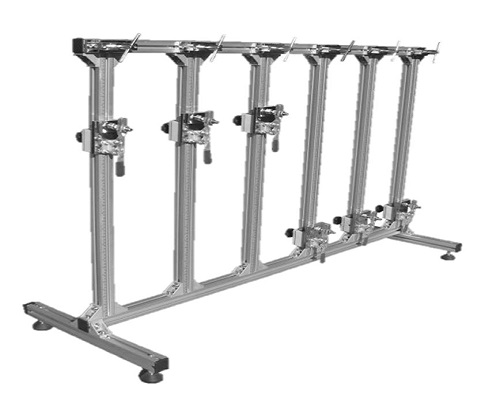
NewsInformation Center
Determination of tensile properties of textile fabrics
2022/12/19
The determination of tensile breaking strength of textile fabrics grasping sample method is applicable to woven fabrics, also applicable to knitted fabrics, coated fabrics and other textiles, not applicable to elastic fabrics, geotextiles, glass fiber woven fabrics, carbon fiber fabrics and polyolefin woven tapes, etc.
Textile tensile testing machine is mainly used for various textile raw materials, plastics, wires and cables, rubber, polymer materials, safety belts, woven bags, tapes, net ropes, metal wires, metal rods, metal plates and other materials mechanical properties test, can be tensile, compression, bending, pull-out and other items of performance testing and mechanical identification.

Testing procedures and operations.
(1) sample preparation: cut two groups of specimens from each sample, one group for the longitudinal or longitudinal specimens, and the other group for the weft or transverse specimens. Each group of specimens includes at least 5 pieces. If there are higher requirements, the number of specimens should be increased. Samples should be representative, should avoid the fabric folds, defects parts. Specimen from the edge of the fabric at least 150mm, to ensure that the sample is evenly distributed on the sample. The width of each specimen is 100mm ± 2mm, the length should be able to meet the spacing length of 100mm.
For the determination of the wet strength of the fabric, the length of the cut specimen is twice the length of the dry strength specimen. After the numbering of the two ends of each specimen, along the lateral cut into two pieces, one for the determination of dry strength, the other for the determination of wet strength. According to experience or estimate the shrinkage of the fabric after invasion of water is larger, the length of the specimen to determine the wet strength should be longer than the specimen to determine the dry strength. Wet test specimens should be placed in 20 ℃ ± 2 ℃ three levels of water or per liter containing 1 g of non-ionic wetting agent in the aqueous solution impregnated with more than 1h.
(2) test parameters selection: tensile speed of 50 mm / min; separation distance of 100 mm; or by the parties concerned agreed that the separation distance can also be 75 mm, accuracy ± 1 mm.
(3) specimen clamping: clamping the central part of the specimen to ensure that the longitudinal centerline of the specimen through the centerline of the clamp, and perpendicular to the clamp jaw line. Make the mark line on the specimen aligned with the side of the clamp, clamping the upper clamp, the specimen by the weight of the fabric drops down so that it is placed flat in the lower clamp, close the lower clamp.
Previous: How to choose IULTCs Veslic leather friction tester?
N e x t : Washing color fastness tester testing process - essential knowledge



